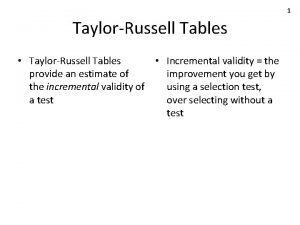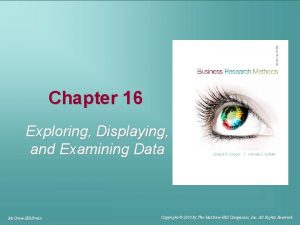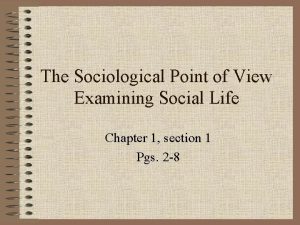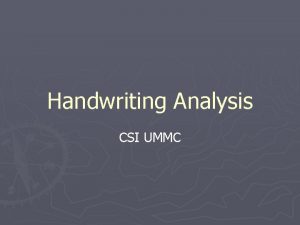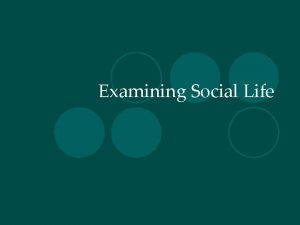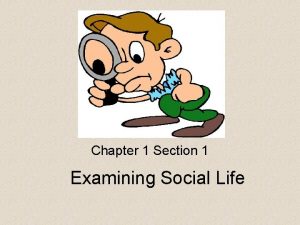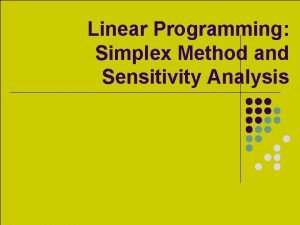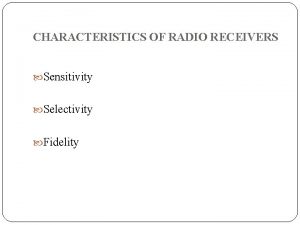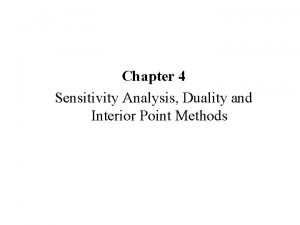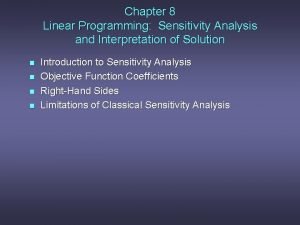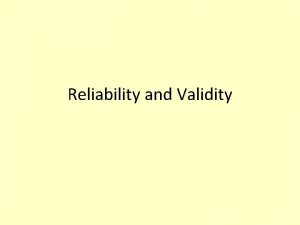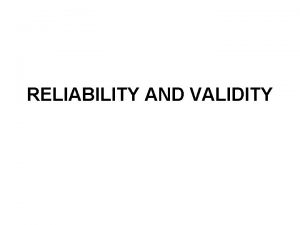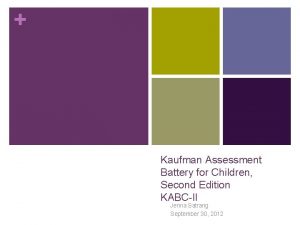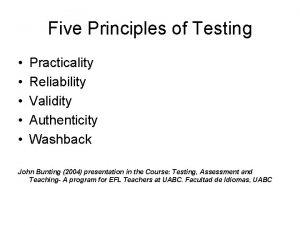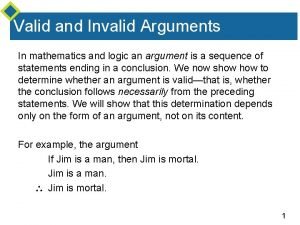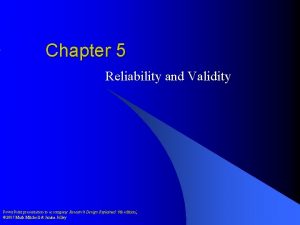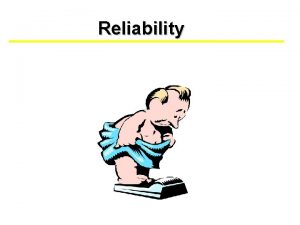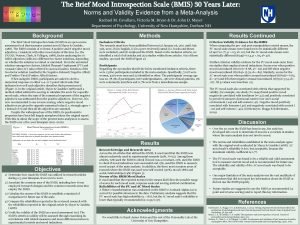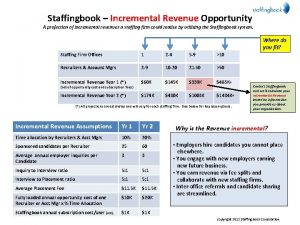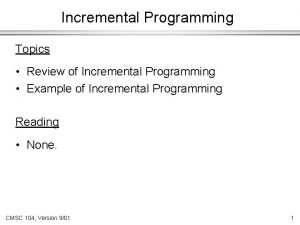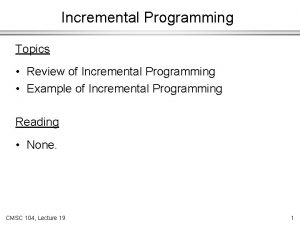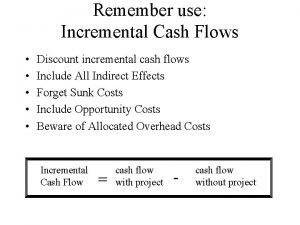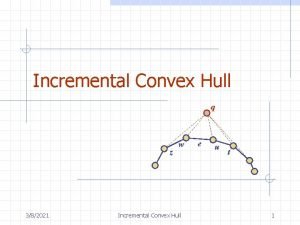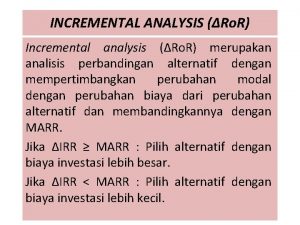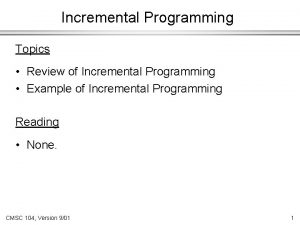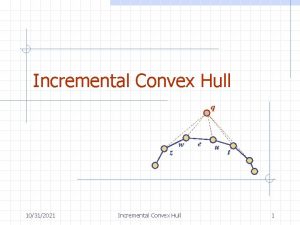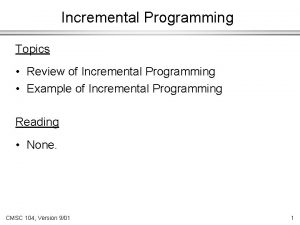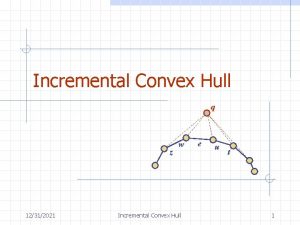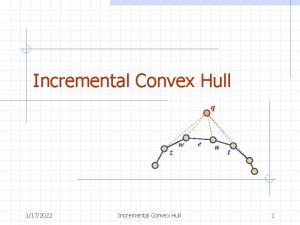Examining the Sensitivity and Incremental Validity of an
































![40% Mixed Responding 100% 90% CASES NOT DETECTED 80% 70% 24% 13% 10% [VALUE] 40% Mixed Responding 100% 90% CASES NOT DETECTED 80% 70% 24% 13% 10% [VALUE]](https://slidetodoc.com/presentation_image_h/2661a2338cae01d622dfc5d40f1e5419/image-33.jpg)
![40% Mixed Responding 100% 90% CASES NOT DETECTED 80% 70% 24% 13% 10% [VALUE] 40% Mixed Responding 100% 90% CASES NOT DETECTED 80% 70% 24% 13% 10% [VALUE]](https://slidetodoc.com/presentation_image_h/2661a2338cae01d622dfc5d40f1e5419/image-34.jpg)
![40% Mixed Responding 100% 90% CASES NOT DETECTED 80% 70% 24% 13% 10% [VALUE] 40% Mixed Responding 100% 90% CASES NOT DETECTED 80% 70% 24% 13% 10% [VALUE]](https://slidetodoc.com/presentation_image_h/2661a2338cae01d622dfc5d40f1e5419/image-35.jpg)
![40% Mixed Responding 100% 90% CASES NOT DETECTED 80% 70% 24% 13% 10% [VALUE] 40% Mixed Responding 100% 90% CASES NOT DETECTED 80% 70% 24% 13% 10% [VALUE]](https://slidetodoc.com/presentation_image_h/2661a2338cae01d622dfc5d40f1e5419/image-36.jpg)




















- Slides: 56

Examining the Sensitivity and Incremental Validity of an MMPI-2 -RF Combined Response Inconsistency (CRIN) Scale for Detecting Mixed Responding Nicole M. Lemaster - Ball State University Kendall Whitney & Danielle Burchett - California State University, Monterey Bay Tayla T. C. Lee – Ball State University

Mixed Responding A type of non-content based responding that includes: • Random Responding • Acquiescent Responding • Counter-Acquiescent Responding

Combined Response Inconsistency Scale (CRIN) • CRIN was developed on the MMPI-A-RF (Archer, Handel, Ben. Porath, & Tellegen, 2016) to: • Augment the shortened VRIN-r and TRIN-r validity scales • Serves as a global measure of non-content based responding • Minimal research has been conducted for the use of CRIN on the MMPI-2 -RF

CRIN Components: VRIN-r • 53 item pairs • A point is assigned when an examinee inconsistently answers a pair of items that were written in the same direction • Total score = number of pairs answered inconsistently

CRIN Components: TRIN-r • 26 pairs • A point is assigned when an examinee inconsistently answers a pair of items that were written in the opposite direction • “Tug-o-War” scoring TRIN-r True TRIN-r False 11 TRIN-r

CRIN Calculation on the MMPI-2 -RF VRIN-r True TRIN-r False 53 Pairs 15 Pairs 11 Pairs CRIN

Previous Research: • Whitney et al. (2018 a): • Calculated raw scores and Linear T Scores using the MMPI-2 -RF normative sample • Examined the basic properties of CRIN scale scores on the MMPI-2 -RF in a forensic inpatient sample • Found that scores on CRIN flagged an extra 3% of cases

Previous Research • Given that CRIN scores uniquely detect cases, Whitney et al. (2018 b) investigated CRIN scores’ ability to measure mixed responding • Used computer-generated mixed responding • Investigated 40% mixed responding

Findings for Whitney et al. (2018 b)

Current Study • Replicate and extend the work of Whitney et al. (2018 b) by: • Investigate CRIN scores incremental validity to VRIN-r and TRIN-r scores in detecting mixed responding at a rate of 40 -100% • Investigate how splitting scores on TRIN-r into TRIN-r True and TRIN-r false impacts the incremental validity of CRIN score in detecting mixed responding alongside VRIN-r, TRIN-r True, and TRIN-r False

Hypotheses 1. Similar to Whitney et al. (2018 b), CRIN scores will demonstrate elevations in the presences of mixed responding. 2. Scores on CRIN will incrementally add to scores on VRIN-r and TRIN-r in detecting mixed responding across all of the rates of mixed responding. 3. CRIN scores’ incremental utility for detecting mixed responding beyond VRIN-r and TRIN-r scores will be negatively impacted by splitting TRIN-r into TRIN-r – True and TRIN-r – False

Method

Methods Participants: • Stringent exclusionary criteria were used to exclude all invalid protocols (Burchett et al. , 2016): • CNS ≥ 15; VRIN-r ≥ 70; TRIN-r ≥ 70; F-r ≥ 79; Fp-r ≥ 70; Fs ≥ 80; FBS ≥ 80; RBS ≥ 80; L-r ≥ 65; K ≥ 60 3, 298 College Students Exclusion Criteria 1, 781 College Students • Four samples of college students were combined to form this large sample: • All samples were collected at Midwestern universities between the years 2007 -2018 • Age: M = 19. 30; SD = 2. 44; Gender: 538 men, 1195 women • Ethnicity: 85. 9% White; 8. 3% African American, 2. 6% Hispanic, 1. 6% Asian, 2. 6% another

Methods - Procedure • Replicated the methodology of Whitney et al. (2018) • Used computer-generated responses to simulate mixed responding at various rates • Split MMPI-2 -RF into three sections • Section 1: Items 1 -113; Section 2: 114 -226; Section 3: 227 -338 Items 1 -113 Items 114 -226 Items 227 -338 F T F T F T F T F T F T F

Methods - Procedure • Replicated the methodology of Whitney et al. (2018) • Used computer-generated responses to simulate mixed responding at various rates • Selected designated percentage of items from each section (Ex. 40%) Items 1 -113 Items 114 -226 Items 227 -338 F T F T F T 40%TChosen F T F T F T F

Methods - Procedure • Replicated the methodology of Whitney et al. (2018) • Used computer-generated responses to simulate mixed responding at various rates • Selected designated percentage of items from each section (Ex. 40%) • Generate random, acquiescent, or counter acquiescent responding Items 1 -113 T Items 114 -226 F T F 40% Chosen F F F Items 227 -338 T F T F T F T T F T F

Methods - Procedure • Replicated the methodology of Whitney et al. (2018) • Used computer-generated responses to simulate mixed responding at various rates • Selected designated percentage of items from each section (Ex. 40%) • Generate random, acquiescent, or counter acquiescent responding Items 1 -113 T T F T Items 114 -226 Items 227 -338 F T F T T 40% Random F (True or False) F F F T F T F T F F F

Methods - Procedure • Replicated the methodology of Whitney et al. (2018) • Used computer-generated responses to simulate mixed responding at various rates • Selected designated percentage of items from each section (Ex. 40%) • Generate random, acquiescent, or counter acquiescent responding Items 1 -113 T T F T Items 114 -226 F T T T 40% Random F (True or False) F F F Items 227 -338 T 40%FChosen T F F T F T F

Methods - Procedure • Replicated the methodology of Whitney et al. (2018) • Used computer-generated responses to simulate mixed responding at various rates • Selected designated percentage of items from each section (Ex. 40%) • Generate random, acquiescent, or counter acquiescent responding Items 1 -113 T T F T Items 114 -226 F T T T 40% Random F (True or False) F F F Items 227 -338 T 40%FChosen T F F T F T F

Methods - Procedure • Replicated the methodology of Whitney et al. (2018) • Used computer-generated responses to simulate mixed responding at various rates • Selected designated percentage of items from each section (Ex. 40%) • Generate random, acquiescent, or counter acquiescent responding Items 1 -113 T T F T Items 114 -226 F T T T 40% Random F (True or False) F F F Items 227 -338 T F T T T 40% Acquiescent F T (All True) F T T T F T F T T F F T

Methods - Procedure • Replicated the methodology of Whitney et al. (2018) • Used computer-generated responses to simulate mixed responding at various rates • Selected designated percentage of items from each section (Ex. 40%) • Generate random, acquiescent, or counter acquiescent responding Items 1 -113 T T F T Items 114 -226 F T T T 40% Random F (True or False) F F F Items 227 -338 T T 40% Acquiescent F T (All True) F T T T F T F F 40% TChosen T F

Methods - Procedure • Replicated the methodology of Whitney et al. (2018) • Used computer-generated responses to simulate mixed responding at various rates • Selected designated percentage of items from each section (Ex. 40%) • Generate random, acquiescent, or counter acquiescent responding Items 1 -113 T T F T Items 114 -226 F T T T 40% Random F (True or False) F F F Items 227 -338 T T 40% Acquiescent F T (All True) F T T T F T F F 40% TChosen T F

Methods - Procedure • Replicated the methodology of Whitney et al. (2018) • Used computer-generated responses to simulate mixed responding at various rates • Selected designated percentage of items from each section (Ex. 40%) • Generate random, acquiescent, or counter acquiescent responding Items 1 -113 T T F T Items 114 -226 F T T T 40% Random F (True or False) F F F Items 227 -338 T F T T T 40% Acquiescent F T (All True) F T T F F F 40% Counter. T F Acquiescent (All False) F T F F

Methods - Procedure • This entire process was complete 6 different times to account for six different variations of mixed responding • This was repeated across the 7 different variations in mixed responding rate (40 -100%) ACR ARC RCA RAC CAR CRA A = Acquiescent C = Counter-acquiescent R = Random

Results

Hypothesis # 1: CRIN scores will demonstrate elevation in the presence of mixed responding.

40% Mixed Responding 60% Mixed Responding 120 110 100 90 90 80 80 70 70 60 60 50 50 40 40 30 30 20 20 10 10 0 0 RAC RCA VRIN-r CAR CRA TRIN-r ARC CRIN ACR

40% Mixed Responding 60% Mixed Responding 120 110 100 90 90 80 80 70 70 60 60 50 50 40 40 30 30 20 20 10 10 0 0 RAC RCA VRIN-r CAR CRA TRIN-r ARC CRIN ACR

40% Mixed Responding 60% Mixed Responding 120 110 100 90 90 80 80 70 70 60 60 50 50 40 40 30 30 20 20 10 10 0 0 RAC RCA VRIN-r CAR CRA TRIN-r ARC CRIN ACR

40% Mixed Responding 60% Mixed Responding 120 110 100 90 90 80 80 70 70 60 60 50 50 40 40 30 30 20 20 10 10 0 0 RAC RCA VRIN-r CAR CRA TRIN-r ARC CRIN ACR

100% Mixed Responding 80% Mixed Responding 120 110 100 90 90 80 80 70 70 60 60 50 50 40 40 30 30 20 20 10 10 0 0 RAC RCA VRIN-r CAR CRA TRIN-r ARC CRIN ACR

Hypothesis # 2: Scores on CRIN will incrementally add to scores on VRIN-r and TRIN-r in detecting mixed responding across all of the rates of mixed responding
![40 Mixed Responding 100 90 CASES NOT DETECTED 80 70 24 13 10 VALUE 40% Mixed Responding 100% 90% CASES NOT DETECTED 80% 70% 24% 13% 10% [VALUE]](https://slidetodoc.com/presentation_image_h/2661a2338cae01d622dfc5d40f1e5419/image-33.jpg)
40% Mixed Responding 100% 90% CASES NOT DETECTED 80% 70% 24% 13% 10% [VALUE] 62% 4% 2% 60% 11% 50% 16% 40% 2% 5% 30% 14% 59% 20% 6% 10% 17% RAC 16% 3% 3% 53% 2% 0% 37% 41% 16% 3% 36% 1% 43% 18% RCA CAR CRA ARC ACR 2%
![40 Mixed Responding 100 90 CASES NOT DETECTED 80 70 24 13 10 VALUE 40% Mixed Responding 100% 90% CASES NOT DETECTED 80% 70% 24% 13% 10% [VALUE]](https://slidetodoc.com/presentation_image_h/2661a2338cae01d622dfc5d40f1e5419/image-34.jpg)
40% Mixed Responding 100% 90% CASES NOT DETECTED 80% 70% 24% 13% 10% [VALUE] 62% 4% 2% 60% 11% 50% 16% 40% 2% 5% 30% 14% 59% 20% 6% 10% 17% RAC 16% 3% 3% 53% 2% 0% 37% 41% 16% 3% 36% 1% 43% 18% RCA CAR CRA ARC ACR 2%
![40 Mixed Responding 100 90 CASES NOT DETECTED 80 70 24 13 10 VALUE 40% Mixed Responding 100% 90% CASES NOT DETECTED 80% 70% 24% 13% 10% [VALUE]](https://slidetodoc.com/presentation_image_h/2661a2338cae01d622dfc5d40f1e5419/image-35.jpg)
40% Mixed Responding 100% 90% CASES NOT DETECTED 80% 70% 24% 13% 10% [VALUE] 62% 4% 2% 60% 11% 50% 16% 40% 2% 5% 30% 14% 59% 20% 6% 10% 17% RAC 16% 3% 3% 53% 2% 0% 37% 41% 16% 3% 36% 1% 43% 18% RCA CAR CRA ARC ACR 2%
![40 Mixed Responding 100 90 CASES NOT DETECTED 80 70 24 13 10 VALUE 40% Mixed Responding 100% 90% CASES NOT DETECTED 80% 70% 24% 13% 10% [VALUE]](https://slidetodoc.com/presentation_image_h/2661a2338cae01d622dfc5d40f1e5419/image-36.jpg)
40% Mixed Responding 100% 90% CASES NOT DETECTED 80% 70% 24% 13% 10% [VALUE] 62% 4% 2% 60% 11% 50% 16% 40% 2% 5% 30% 14% 59% 20% 6% 10% 17% RAC 16% 3% 3% 53% 2% 0% 37% 41% 16% 3% 36% 1% 43% 18% RCA CAR CRA ARC ACR 2%

60% Mixed Responding 100% 4% 3% 90% 0% 80% 14% 4% 0% 31% 10% 2% 6% 70% 60% 7% 7% 7% 30% CASES NOT DETECTED 10% 3% 24% 26% 50% 4% 5% 94% 86% 75% 66% 30% 20% 37% 4% 6% 32% 10% 0% RAC RCA CAR CRA 0% 1% ARC ACR

80% Mixed Responding 100% 90% CASES NOT DETECTED 80% 12% 5% 0% 6% 2% 6% 1% 2% 9% 1% 12% 24% 27% 5% 3% 7% 5% 70% 60% 5% 50% 94% 85% 40% 30% 93% 87% 55% 49% 20% 10% 0% RAC RCA CAR CRA ARC ACR 0%

100% Mixed Responding 100% CASES NOT DETECTED 1% 90% 19% 80% 3% 1% 3% 6% 2% 1% 24% 1% 70% 7% 4% 60% 50% 40% 1% 99% 97% 99% 93% 76% 62% 30% 20% 10% 0% RAC RCA CAR CRA ARC ACR

Hypothesis # 3: CRIN scores’ incremental utility for detecting mixed responding beyond VRIN-r and TRIN-r scores will be negatively impacted by splitting TRIN-r into TRIN-r – True and TRIN-r – False

40% Mixed Responding 60% Mixed Responding 120 110 100 90 90 80 80 70 70 60 60 50 50 40 40 30 30 20 20 10 10 0 0 RAC VRIN-r RCA CAR TRIN-r TRUE CRA ARC ACR TRIN-r FALSE CRIN RAC VRIN-r RCA CAR TRIN-r TRUE CRA ACR TRIN-r FALSE ARC CRIN

80% Mixed Responding 100% Mixed Responding 120 110 100 90 90 80 80 70 70 60 60 50 50 40 40 30 30 20 20 10 10 0 0 RAC VRIN-r RCA CAR TRIN-r TRUE CRA ARC TRIN-r FALSE ACR CRIN

40% Mixed Responding 100% 90% 24% 26% 70% 36% 38% 80% 6% 58% <1% 8% 2% 6% 60% 6% 9% 50% 40% 10% 4% 3% 7% <1% 3% 30% 20% 5% 1% 13% 3% 9% 7% 3% 10% 9% 9% <1% 6% 3% 1% 41% 28% 7% 14% 5% 14% RAC 58% 10% 47% 4% <1% 34% 11% RCA CAR CRA ARC ACR <1% 2%

60% Mixed Responding 100% 90% 7% 0% 29% 13% 80% 70% 60% 50% 40% 30% 0% 3% 7% 14% 10% 5% 1% 4% 0% 29% 19% 5% 1% 11% 27% 3% 2% 2% 32% 21% 53% 15% 38% 42% 23% RAC 0% 11% 17% 16% 13% 1% 3% 24% 7% 8% 10% 13% 1% 20% 10% 2% 40% 18% RCA CAR CRA ARC ACR

80% Mixed Responding 100% 90% 80% 70% 8% 14% 13% 3% 15% 10% 5% 0% <1% 1% 22% 8% 11% <1% [VALUE] 12% 2% 15% 0% <1% 0% 7% 19% 1% 9% 60% 50% 40% 35% 3% 13% 35% 31% 43% 25% 22% 30% 41% 20% 10% 0% 33% 31% CAR CRA 25% RAC RCA 41% 42% ARC ACR <1%

100% Mixed Responding 100% 90% 80% 70% 60% 12% 13% 0% 7% 3% 2% 27% 13% 9% 0% 0% 39% 19% 31% 38% 0% 26% 46% 23% 20% 0% 0% 3% 1% 25% 61% 30% 10% 3% 12% 0% 50% 40% 0% 5% 0% 15% 8% 9% 15% 36% 26% RAC 19% RCA CAR 25% 14% CRA ARC ACR

Discussion

Hypothesis 1: CRIN scores will demonstrate elevation in the presence of mixed responding • Successfully replicated and extended the findings observed by Whitney et al. (2018 b) • VRIN-r and CRIN scores were elevated across all rates of mixed responding • However, TRIN-r scores remained between 55 -70 across all the rates of mixed responding

Hypothesis 2: Scores on CRIN will incrementally add to scores on VRIN-r and TRIN-r in detecting mixed responding across all of the rates of mixed responding. • Scores on CRIN add incrementally to VRIN-r and TRIN-r score for detecting mixed responding across all of the different rates of mixed responding. • CRIN scores flagged 0 -27% unique cases across all conditions

Hypothesis 3: Splitting TRIN-r into TRIN-r – True and TRIN-r – False will negatively impact CRIN scores ability to incremental add to scores on VRIN-r, TRIN-r – True, and TRIN-r – False in the detection of mixed responding. • Allowed scores on TRIN-r – True and TRIN-r - False to elevate beyond the 60 -70 t-score range • Negatively impacted CRIN scores ability to incremental add to scores on VRIN-r, TRIN-r – True, and TRIN-r – False in the detection of mixed responding VRIN-r, TRIN-r, & CRIN VRIN-r, TRIN-r – True, TRIN-r False, & CRIN % Detected by CRIN 40% 10 – 16% 6 – 10% 50% 6 – 21% 3 – 10% 60% 3 – 27% 2 – 11% 70% 1 – 27% 0 – 11% 80% 0 – 27% 1 – 10% 90% 1 – 26% 0 – 9% 100% 0 – 24% 0 – 7% Mixed Responding Rate

Hypothesis 3: Splitting TRIN-r into TRIN-r – True and TRIN-r – False will negatively impact CRIN scores ability to incremental add to scores on VRIN-r, TRIN-r – True, and TRIN-r – False in the detection of mixed responding. • Allowed scores on TRIN-r – True and TRIN-r - False to elevate beyond the 60 -70 t-score range • Negatively impacted CRIN scores ability to incremental add to scores on VRIN-r, TRIN-r – True, and TRIN-r – False in the detection of mixed responding VRIN-r, TRIN-r, & CRIN VRIN-r, TRIN-r – True, TRIN-r - False, & CRIN % Detected by CRIN 40% 10 – 16% 6 – 10% 50% 6 – 21% 3 – 10% 60% 3 – 27% 2 – 11% 70% 1 – 27% 0 – 11% 80% 0 – 27% 1 – 10% 90% 1 – 26% 0 – 9% 100% 0 – 24% 0 – 7% Mixed Responding Rate

Hypothesis 3: Splitting TRIN-r into TRIN-r – True and TRIN-r – False will negatively impact CRIN scores ability to incremental add to scores on VRIN-r, TRIN-r – True, and TRIN-r – False in the detection of mixed responding. • However, by splitting TRIN-r into TRIN-r – True and TRIN-r – False, fewer invalid cases were detected than when simply using TRIN-r scores VRIN-r, TRIN-r, & CRIN VRIN-r, TRIN-r – True, TRIN-r - False, & CRIN % Not Detected 40% 39 – 80% 24 – 58% 50% 4 – 30% 10 – 42% 60% 4 – 31% 7 – 29% 70% 2 – 20% 6 – 21% 80% 0 – 12% 7 – 14% 90% 0 – 7% 9 – 28% 100% 0 – 2% 9 – 27% Mixed Responding Rate

Hypothesis 3: Splitting TRIN-r into TRIN-r – True and TRIN-r – False will negatively impact CRIN scores ability to incremental add to scores on VRIN-r, TRIN-r – True, and TRIN-r – False in the detection of mixed responding. • However, by splitting TRIN-r into TRIN-r – True and TRIN-r – False, fewer invalid cases were detected than when simply using TRIN-r scores VRIN-r, TRIN-r, & CRIN VRIN-r, TRIN-r – True, TRIN-r - False, & CRIN % Not Detected 40% 39 – 80% 24 – 58% 50% 4 – 30% 10 – 42% 60% 4 – 31% 7 – 29% 70% 2 – 20% 6 – 21% 80% 0 – 12% 7 – 14% 90% 0 – 7% 9 – 28% 100% 0 – 2% 9 – 27% Mixed Responding Rate

Conclusions • In the presence of mixed responding, scores on CRIN appear to add incrementally to scores on VRIN-r and TRIN-r. • Though CRIN’s utility is limited when TRIN-r is split into TRIN-r – True and TRINr – False, splitting TRIN-r appears to limit the number of invalid cases detected. • Overall, adding a CRIN scale on the MMPI-2 -RF and future instruments may be more useful than using TRIN-r - True and TRIN-r - False in the detection of mixed responding.

Limitation and Future Directions LIMITATIONS • Simulation design • Operationalization of mixed responding FUTURE DIRECTIONS • Explore different method of operationalizing mixed responding • Investigate if/how mixed responding occurs naturally

Acknowledgments: University of Minnesota Press & MMPI Lab at Kent State University CONTACT INFORMATION: Nicole M. Lemaster Ball State University Department of Psychological Science North Quadrangle Building Muncie, Indiana 47306 Email: nmlemaster@bsu. edu
 Criterion related validity definition
Criterion related validity definition Taylor-russell tables provide evidence of
Taylor-russell tables provide evidence of Data preparing exploring examining and displaying
Data preparing exploring examining and displaying Examining social life
Examining social life Csi handwriting analysis
Csi handwriting analysis Is sociology a social science
Is sociology a social science Examining social life practice
Examining social life practice Three principles of acquiring spiritual knowledge
Three principles of acquiring spiritual knowledge What conclusions can you make from examining the geochart
What conclusions can you make from examining the geochart Simplex method and sensitivity analysis
Simplex method and sensitivity analysis Receiver selectivity
Receiver selectivity Sensitivity analysis and duality
Sensitivity analysis and duality 100 rule sensitivity analysis
100 rule sensitivity analysis Validity reliability and objectivity
Validity reliability and objectivity Define criterion validity
Define criterion validity Reliability refers to
Reliability refers to Reliability and validity definition
Reliability and validity definition Kabc-ii conceptual thinking subtest description
Kabc-ii conceptual thinking subtest description Validity reliability practicality
Validity reliability practicality Conclusion
Conclusion Reliability and validity in research ppt
Reliability and validity in research ppt Validity of data
Validity of data Compare sources of information on professional development
Compare sources of information on professional development Test retest reliability
Test retest reliability Brief mood introspection scale reliability and validity
Brief mood introspection scale reliability and validity Hình ảnh bộ gõ cơ thể búng tay
Hình ảnh bộ gõ cơ thể búng tay Frameset trong html5
Frameset trong html5 Bổ thể
Bổ thể Tỉ lệ cơ thể trẻ em
Tỉ lệ cơ thể trẻ em Chó sói
Chó sói Tư thế worm breton là gì
Tư thế worm breton là gì Chúa sống lại
Chúa sống lại Môn thể thao bắt đầu bằng từ đua
Môn thể thao bắt đầu bằng từ đua Thế nào là hệ số cao nhất
Thế nào là hệ số cao nhất Các châu lục và đại dương trên thế giới
Các châu lục và đại dương trên thế giới Công thức tiính động năng
Công thức tiính động năng Trời xanh đây là của chúng ta thể thơ
Trời xanh đây là của chúng ta thể thơ Cách giải mật thư tọa độ
Cách giải mật thư tọa độ Làm thế nào để 102-1=99
Làm thế nào để 102-1=99 độ dài liên kết
độ dài liên kết Các châu lục và đại dương trên thế giới
Các châu lục và đại dương trên thế giới Thể thơ truyền thống
Thể thơ truyền thống Quá trình desamine hóa có thể tạo ra
Quá trình desamine hóa có thể tạo ra Một số thể thơ truyền thống
Một số thể thơ truyền thống Cái miệng bé xinh thế chỉ nói điều hay thôi
Cái miệng bé xinh thế chỉ nói điều hay thôi Vẽ hình chiếu vuông góc của vật thể sau
Vẽ hình chiếu vuông góc của vật thể sau Nguyên nhân của sự mỏi cơ sinh 8
Nguyên nhân của sự mỏi cơ sinh 8 đặc điểm cơ thể của người tối cổ
đặc điểm cơ thể của người tối cổ Thế nào là giọng cùng tên?
Thế nào là giọng cùng tên? Vẽ hình chiếu đứng bằng cạnh của vật thể
Vẽ hình chiếu đứng bằng cạnh của vật thể Phối cảnh
Phối cảnh Thẻ vin
Thẻ vin đại từ thay thế
đại từ thay thế điện thế nghỉ
điện thế nghỉ Tư thế ngồi viết
Tư thế ngồi viết Diễn thế sinh thái là
Diễn thế sinh thái là Dot
Dot

